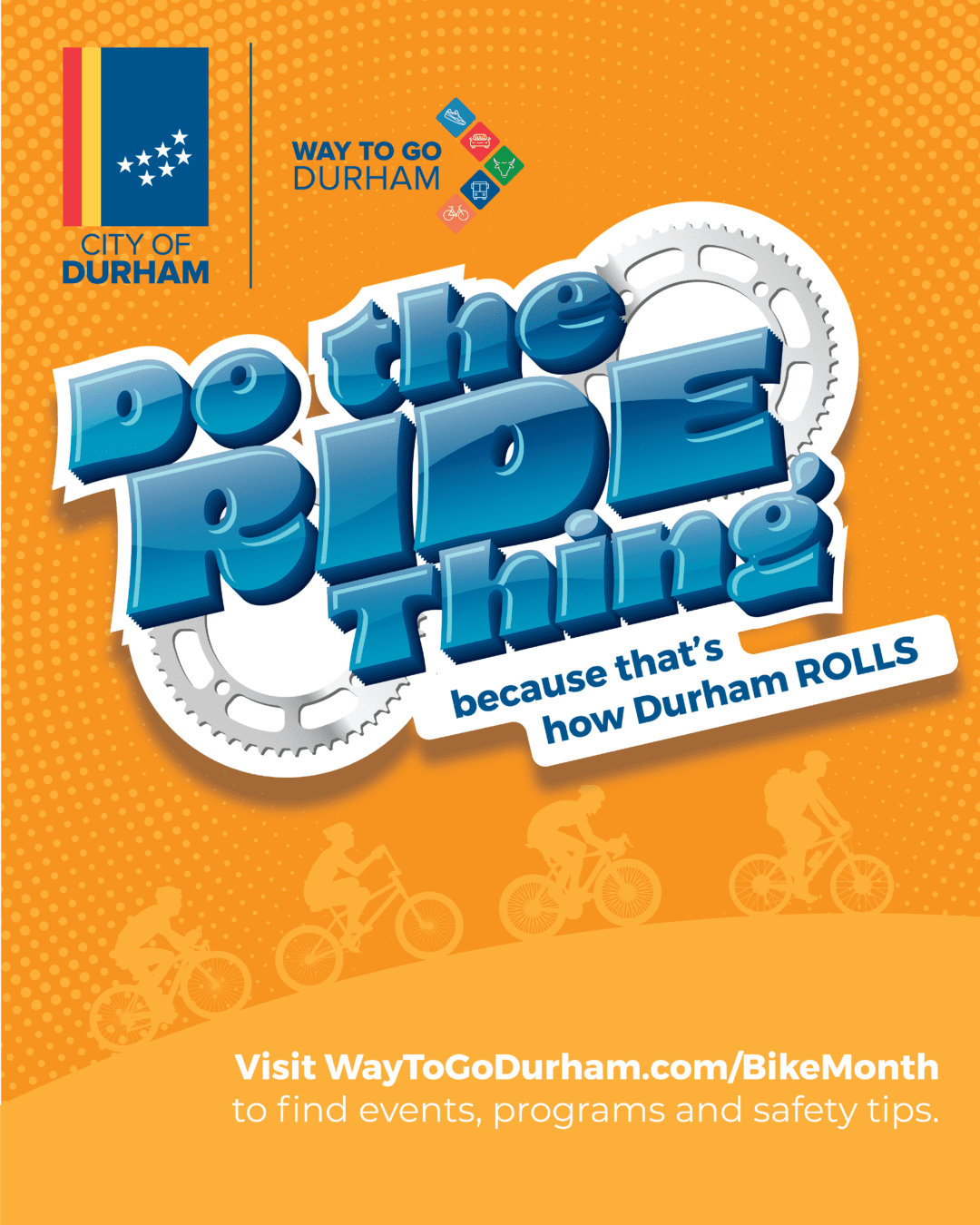Since 1956, the American League of Bicyclists has marked May as National Bike Month. The celebration creates a month of events to show biking as a safe, sustainable, fun, and reliable travel method for people of all ages and skill levels. The City’s Transportation Department celebrates Bike Month through our initiative “Do the R.I.D.E. Thing.”
1. Re-examine Your Bike
Visit a Local Bike Shop for a Bike Tune-Up:
There are multiple local bike shops in Durham where you can take your bike for a tune-up: Bullseye Cycle, Seven Stars Cycle, Bicycle Chain—Durham, the Durham Bike Coop, and Durham Cycles.
Use one of the City’s Bike Fixit Stations:
Durham has several bike fixit stations. Two are located in downtown Durham, one in the Corcoran Street Parking Garage and another in the Chapel Hill Street Parking Garage. View this map of Bike Fixit Stations across Durham.
Conduct a DIY Tire Exam:
Before you begin any Bike Month festivities, examine your tires. First, conduct a visual test of the tire tread. The tread should be evenly worn with no visible cracks or cuts. Your tires are ready to roll if there are no bulges and the valve is straight and secure. After your visual steps, use your hands to feel if there is any debris wedged in your tires. If you feel something in your tires, use a tool to remove the item. Next, you should lift your bike or flip it upside down to spin your tires. While spinning them, you are checking if the tires need to be tightened or if there are additional bumps. Finally, check your tire pressure with a gauge or tire pump. The recommended PSI (pounds per square inch) varies by bike, but ranges from 20-30 PSI for mountain bikes, 50-70 PSI for hybrid bikes, and 80-130 PSI for road bikes.
2. Identify Your Route
Now that your bike is ready to go on the road, you must identify your route. It is essential to map out your route ahead of time to ensure your safety by avoiding dangerous roadways, heavy traffic flow, or areas without bike lanes. Google Maps, Apple Maps, or the Durham Bike and Hike Map can provide directions. Pre-planning your route can also help determine what terrain you’ll be riding on, help you dress appropriately, and bring the right gear.
3. Determine Your Visibility
Determining your visibility as a cyclist is asking: Can others see me clearly at night, in any condition? Being visible is not only about safety at night; it is crucial 24/7.
While getting dressed, keep these color tips in mind:
Daytime Colors that enhance visibility:
Yellow, Orange, Neon Green
Accessories:
As a cyclist, reflective clothing items such as vests, sashes, ankle bands, or stickers on helmets or bikes.
Remember, Reflective = shines when lights hit it (great at night)
Fluorescent = highly visible during daylight
4. Enjoy Your Ride
The work to prepare for your bike ride is finished. Now’s your time to make the most of your ride. Invite your friends, family, or colleagues. Join a bike group for a community ride or participate in one of the many bike month events.
After you “Do the R.I.D.E. Thing,” your Bike Month will remain on the right pedal. Our department’s biking and pedestrian planning division continues working on developing safer, more accessible bike paths and lanes across the City. Whether you’re a skilled cyclist or a beginner, Bike Month is your chance to travel safely and sustainably by bike.

